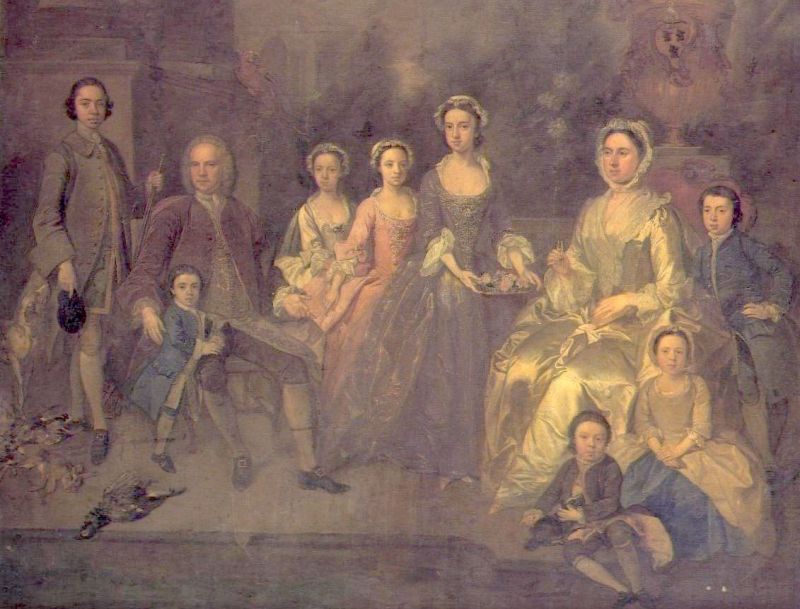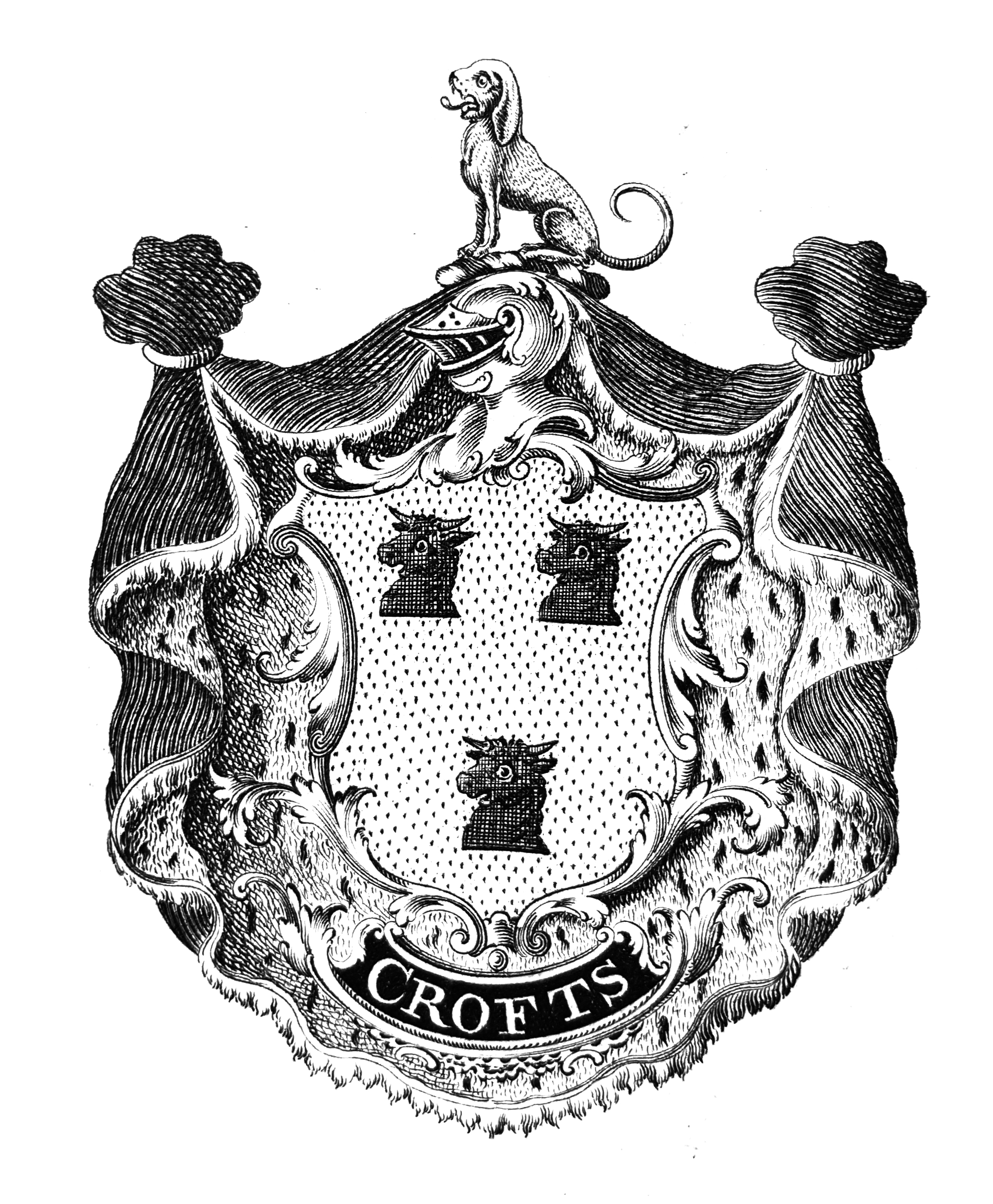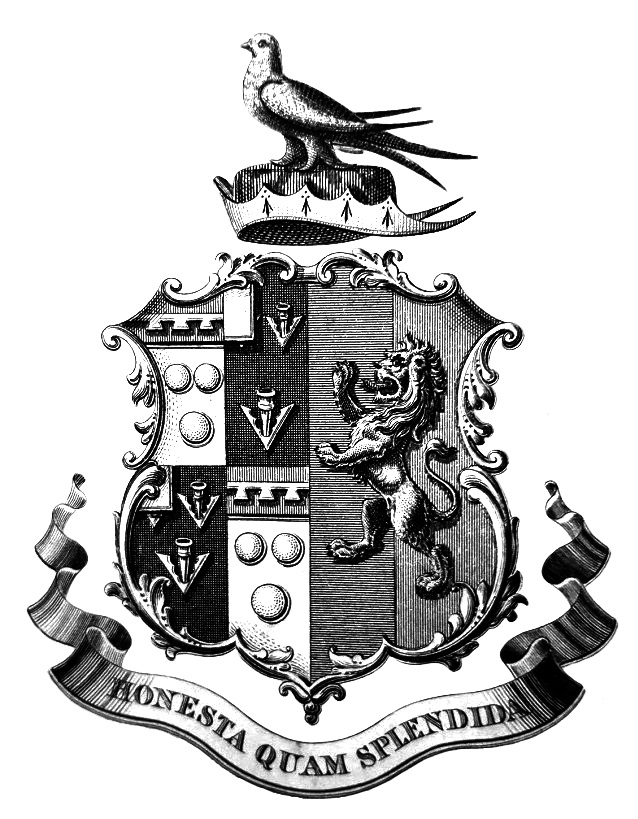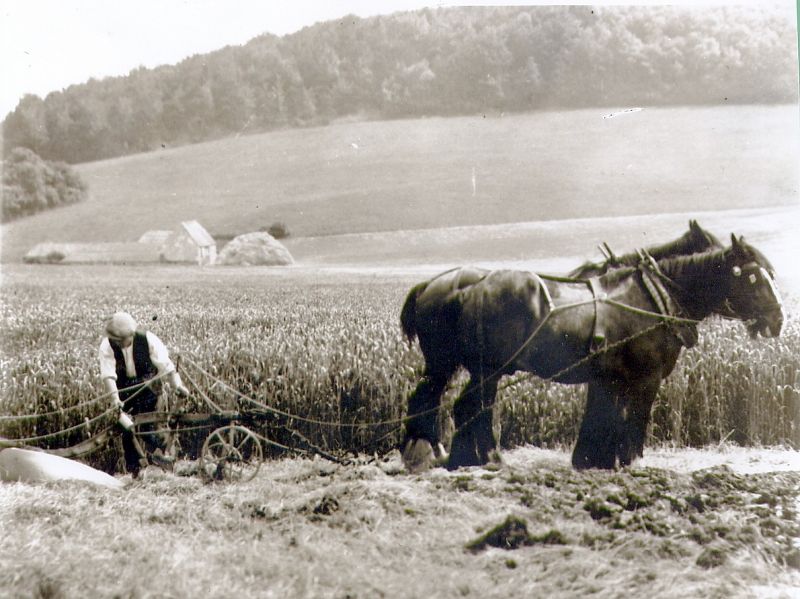The Family History of Sompting Estate
 Up until around 250 years ago, the manor of 'Sompting Abbotts', which is the core of today's Sompting Estate, was owned by a succession of 'yeoman' (middle class) families, and before them it was the Earl of Arundel's. It was called 'Abbotts' because it had been given, in the Middle Ages, to the Abbey of Fecamp in France, a day's sail away across the Channel.
Up until around 250 years ago, the manor of 'Sompting Abbotts', which is the core of today's Sompting Estate, was owned by a succession of 'yeoman' (middle class) families, and before them it was the Earl of Arundel's. It was called 'Abbotts' because it had been given, in the Middle Ages, to the Abbey of Fecamp in France, a day's sail away across the Channel. The present family's ownership started when it was bought, together with Lychpole Manor, by John Crofts, a solicitor, in the mid eighteenth century. His descendants later added to it the manor of Sompting Peverel and some land in Cokeham manor, completing the present-day Sompting Estate.
This painting shows John Crofts with his wife Anne Le Pla (from a huguenot refugee family), and some of their children. John and Ann were ancestors of the present Estate family, the Tristrams.

The Crofts family coat of arms is seen in the portrait at top right, and, left, in a bookplate belonging to Henry Crofts who lived in Sompting Abbotts. The bulls' heads may represent farming - and perhaps the family started out as crofters. The dog crest is sometimes shown separately with the motto "Con Fido", which means With Trust - we think it also means the dog was called Fido.

In 1879, Blanche Crofts married Sam Tristram, changing the Estate family's name.
Sam's Tristram family arms had Sussex's beloved martlet bird, or sometimes a wolf, as a crest instead of the Crofts' dog. The Tristram motto, like the Crofts' 'with trust', was about practical sincerity. "Honesta quam Splendida" means 'good honest deeds not just show'. The estate's family of businesses, from farming, to horticulture, to holidaying and wine, are about good honest produce and experiences - so we know what the motto writers meant. Even so, we do think our Sompting countryside and our plants are 'splendid'.
This version of the Tristram arms, right, was copied from a bookplate belonging to Sam's brother William Tristram. The original Tristram name arms are the three roundels with the pattern above, and the bird or wolf's-head crest. The lion and the spearheads refer to the families of women who married Tristrams.
Perhaps a simpler arms for the estate today could combine the bulls and the balls. The Crofts' three bulls could represent the farmland and the natural cycles which sustain the soil and its flora and fauna through grazing animals. The Tristrams' three balls can represent juggling the many activities which make up the estate's contribution to the lives of people, nature and the planet. If the two top balls stand for people and nature, the biggest ball can stand for the planet, and the global issues which we all face.
The manor house rebuilt by the Crofts family in the 1850s, Sompting Abbotts, has been a school since it was last lived in by Major Guy Tristram and his parents in the 1920s. Guy married Ruth Cardew, who added her family's artistic, botanical and spiritual tradition to the Tristrams'. Their son David married Rosemary Roberts, whose maternal family had been immigrants from Wlodowa in Poland. Guy and Ruth, and David and Rosemary, are buried together in St Mary's church Sompting.
With a shared love of gardening and nature, together David and Rosemary founded two of the nurseries which later became Tristram Plants, while their children took an interest in Sompting Estate alongside the businesses they developed for themselves. From 2018 the next generation became involved too. Whether in farming or horticulture, there is unending fascination to working with the living landscape, and pleasure in sharing it..
The Landscape History of Sompting Estate
The Sompting Estate is a fascinating historic landscape. The Scheduled Ancient Monument area on Park Brow was the place where, in the 1920s, archaeologists first came to recognize how the now quiet landscape of the South Downs was densely populated and farmed in prehistoric down to Romano-British times.

The land reveals evidence of medieval and post-medieval farming with equally fascinating changes through to modern times.
More Sompting history info can be found on these links:
Sompting's Festivals, Fairs and Markets
Lancing & Sompting Pastfinders